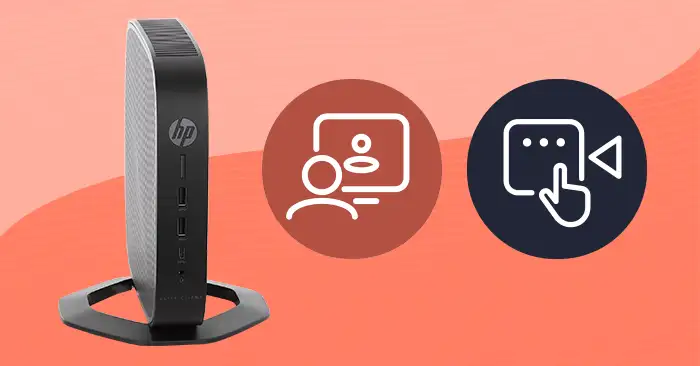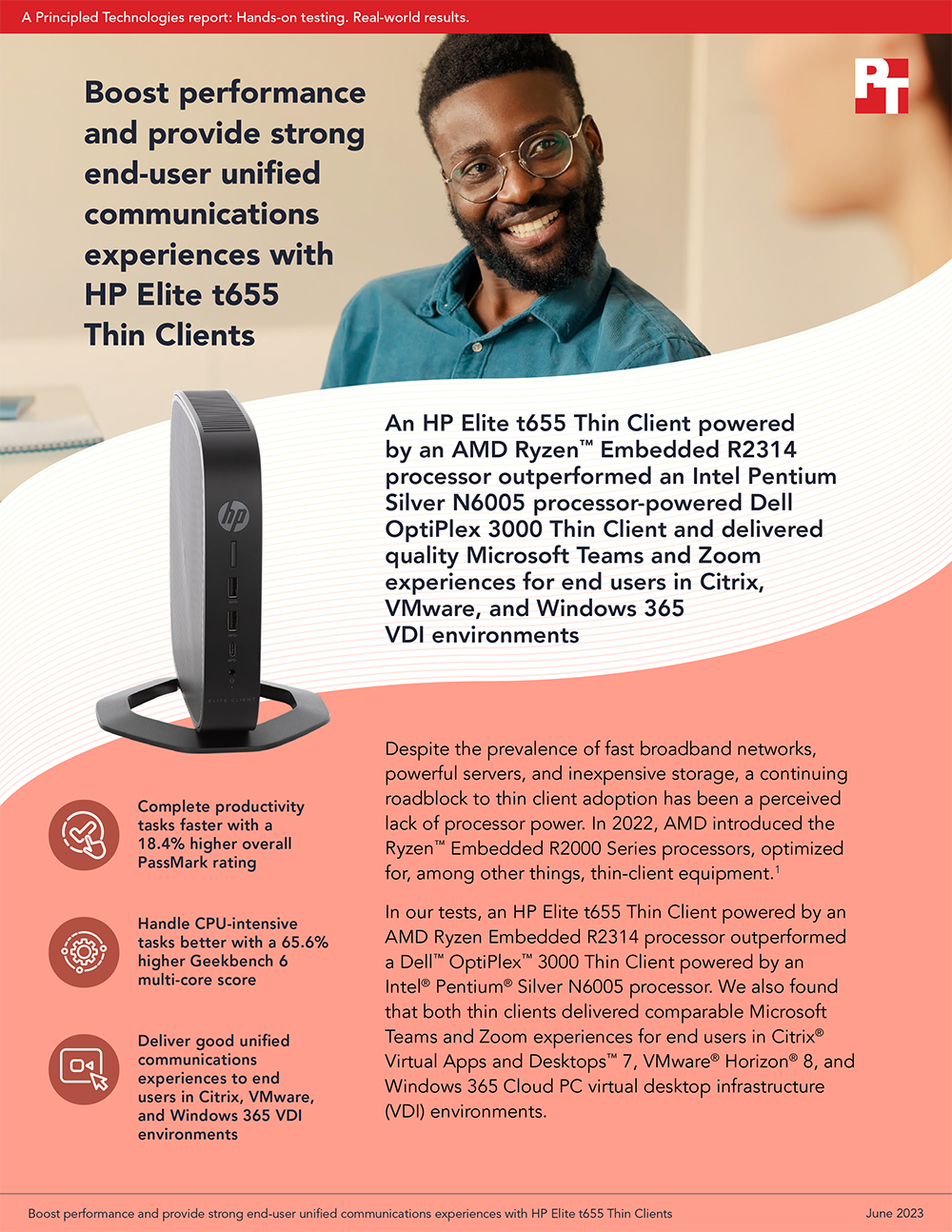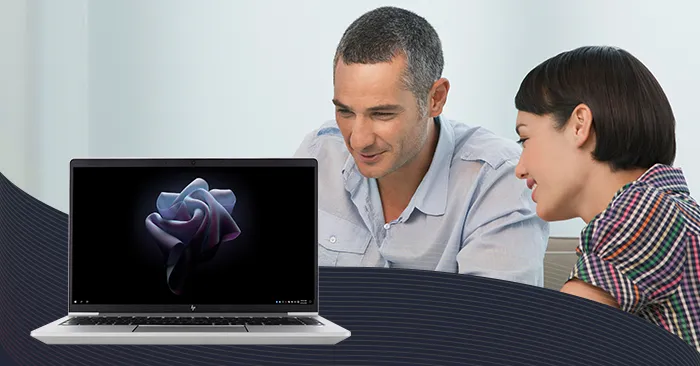
If you search for commentary on the pros and cons of thin clients, it’s likely that you’ll see mentions of pros such as better security, lower costs, and simplified management. On the cons side, you may read that thin clients lack the processing power to handle demanding productivity workflows or resource-intensive applications. Those critiques may have been true of some devices in the past, but now they’re old news—the capabilities of thin clients are rapidly evolving. For example, HP now offers a line of Elite Thin Client desktops equipped with quad-core AMD Ryzen Embedded R2000 Series processors, which AMD optimized for performance in compact systems like thin clients. With the inclusion of AMD Radeon Graphics, up to 32 GB of RAM, and WiFi 6, HP Elite Thin Clients pack more of a hardware punch than many competing devices, but we wanted to see if they deliver the level of performance and end-user experience that buyers demand.
To find out, we conducted system responsiveness testing and unified communications end-user experience comparisons on an HP Elite t655 Thin Client powered by an AMD Ryzen Embedded R2314, and a Dell OptiPlex 3000 Thin Client powered by an Intel Pentium Silver N6005. In our tests, the HP Elite t655 outperformed the Dell OptiPlex 3000 in CPU-intensive and productivity tasks. Plus, in Microsoft Teams and Zoom tests, the HP system provided unified communications experiences that were comparable to those of the Dell system in Citrix Virtual Apps and Desktops 7, VMware Horizon 8, and Windows 365 Cloud PC VDI environments.
For organizations that have considered thin clients in the past due to their traditional strengths but decided against them because of concerns about processing power or a lack of quality communications support, HP’s new line of Elite Thin Client desktops powered by AMD may be an excellent solution.
To dig into the details of our thin client system comparison tests, check out the report below.
Principled Technologies is more than a name: Those two words power all we do. Our principles are our north star, determining the way we work with you, treat our staff, and run our business. And in every area, technologies drive our business, inspire us to innovate, and remind us that new approaches are always possible.






